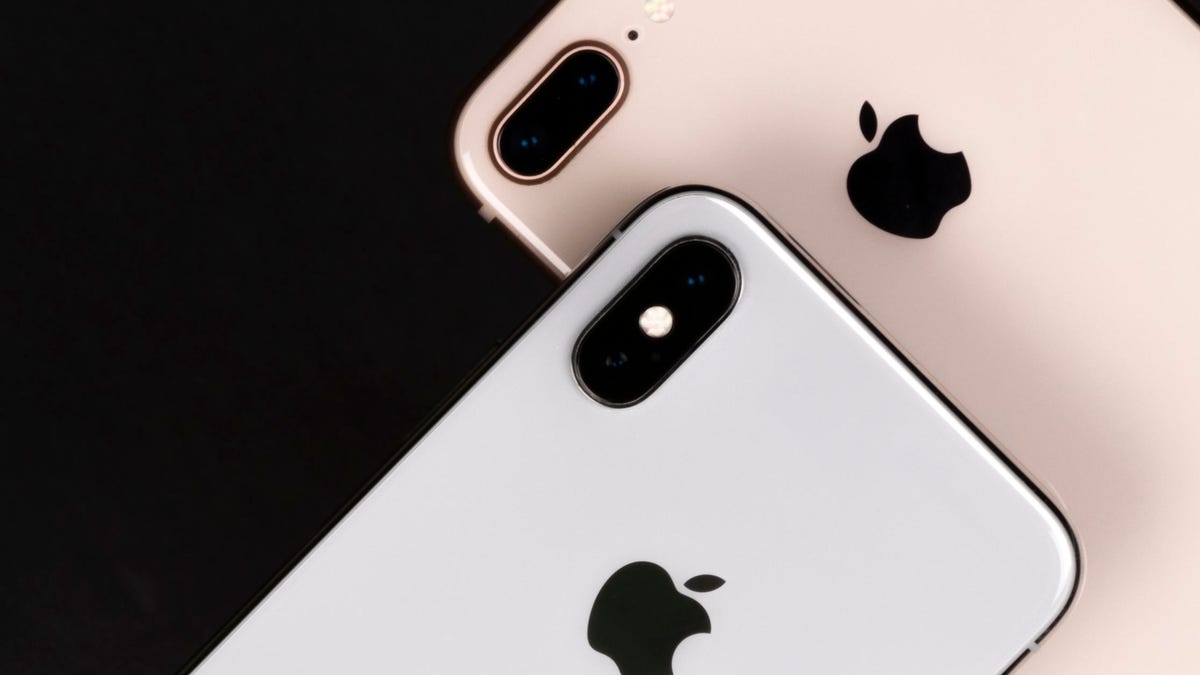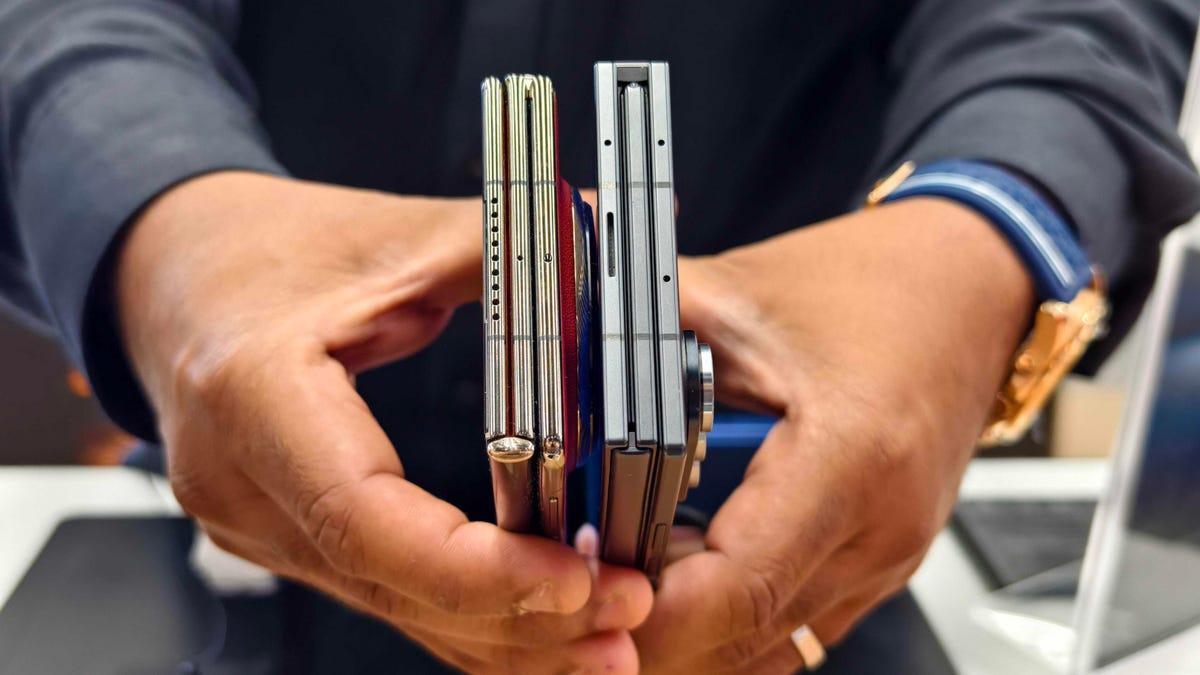Technologies
Your Old Phone Can Still Take Excellent Photos With These Pro Tips
Don’t count out the camera on your older phone. It can still take fantastic photos.

The iPhone 14 Pro, Google Pixel 7 Pro and Samsung Galaxy S23 Ultra are among the best camera phones you can buy in 2023. Packed with multiple lenses and amazing AI software, these phones can take shots that rival professional mirrorless cameras.


However, these top phones come with huge price tags that make them out of reach for many of us. Worry not. Even if you’ve got an older iPhone or Android phone or a budget-focused model without all the bells and whistles, there’s a lot you can do to still take beautiful images. After all, as any photographer will tell you, it’s not just the best camera that takes the best photos.
Still, you’ll need to put in some effort yourself to elevate your shots from simple «ho hum» snaps to «oh, wow!» pieces of art.
Here, then, are my top tips for how to get the best images from an older iPhone, Galaxy phone or any older Android phone.


In this shot, taken on the iPhone X, the road snaking its way into the frame helps to add a leading line that guides the eye up toward the cloudy mountains.
Andrew Lanxon/CNETNail your composition
You can take a photo using the most advanced camera system on the planet, but if you’ve messed up your framing, you’ll still get a bad photo. After all, if you’re taking a photo of a lovely church and you manage to chop off the spire, no amount of editing will bring it back.
Don’t just snap away wildly at your photo location. Instead, slow down, walk around and consider the scene in front of you and how you want it to appear in your shot. Taking a landscape shot? Look for leading lines such as pathways or old stone walls that snake their way into the scene. Or perhaps there’s some interesting rocks or flowers that could add some interest in the foreground.


Taken on the Samsung Galaxy S10 Plus. I used the curving rock face as foreground interest, shooting through the gap that points toward the reservoir in the distance.
Andrew Lanxon/CNETYou can also turn on a «rule of thirds» grid overlay in the settings to help line up the different elements in your scene in a visually pleasing way — or simply to help keep your horizons straight.
If you’ve got multiple rear cameras that offer a zoomed-in or wide-angle view, experiment with these different options. Maybe zooming in can help eliminate distracting elements, or perhaps that wider view can capture more of the beautiful scene in front of you.


With no wide-angle lens on the iPhone 11 Pro, I used the panorama mode to capture a much wider scene here.
Andrew Lanxon/CNETIf you don’t have a wide-angle view, try using the panorama mode to get a wider shot than the standard camera can achieve — or use clip-on lenses, as I discuss below.
Tell a story
The most impactful, iconic images through the years aren’t simply the ones taken with the best camera, but the ones that tell a particular story or capture a moment in time. And sure, maybe you’re not trying to win a photojournalism prize on your summer vacation, but thinking like a photojournalist can help you take images that you’ll want to look back on in years to come.
Perhaps you’re heading to the beautiful Italian coast this year. Of course, you’ll get a nice snap of the ocean from your hotel terrace, but keep in mind what else has made your trip so memorable; the plates of delicious food, the old, dusty streets, the musician playing in the square or the vibrant colors of the fruits and flower stands at the local market. All these elements will make for great photos that capture the heart of the location and tell a great visual story when you look back through them.


This beautiful, shaggy Highland cow wasn’t the reason I visited Scotland, but this was a great opportunity to capture an image of an iconic animal. And the shot really adds to the story told by the images I took on that trip. Taken on the iPhone 11 Pro.
Andrew Lanxon/CNETAnd it doesn’t have to be something you do only on a big family vacation. A weekend walk downtown to the street-food market will offer up great storytelling opportunities, from the graffiti art you see along the way to the plates of vibrant cuisine you choose on arrival. And none of these things require the latest camera hardware to capture beautifully.
Use the light to your advantage
Though today’s top phones can take great nighttime images, older models likely won’t have night modes. As a result, darkness won’t be your friend when you’re trying to get great images. If you’re heading to a viewpoint overlooking the city, try to get there during the day, perhaps when there’s a lovely blue sky sprinkled with fluffy clouds.


Though the middle of the day isn’t always a great time for landscape photos, you might capture moments of peace like this. Taken on the iPhone X.
Andrew Lanxon/CNETMiddle-of-the-day photography is often avoided by landscape photographers because of its harsh quality, but if you’re exploring city streets, it can offer some great opportunities to look for contrast caused by shadows, which could make for dramatic images.
No multi-camera iPhone? Use clip-on lenses
Older iPhones might lack the multiple lenses found on the most recent models, but you don’t just have to make do. Companies like Moment and Olloclip make lenses that attach to your phone, providing wide-angle, telephoto and even macro views.


Using its standard lens (left) the iPhone X can only fit so much in frame. But with the Moment wide angle adapter (right) we get a much wider view.
Andrew Lanxon/CNETSure, you have to carry an extra little item in your bag or pocket as you explore, but adding a clip-on lens is a great way to get a superwide view for those sweeping cityscapes without having to splash the cash in upgrading your phone.
Shoot in DNG raw, even on old phones
Apple’s ProRaw image format, introduced on the iPhone 12 Pro Max, uses computational imaging techniques like HDR but still provides you with a DNG raw file that’s much easier to edit in apps like Adobe Lightroom. It isn’t a function found on older iPhones, but those of you on older phones can still shoot in regular raw if you’re keen to do your own edits.
You can’t shoot in DNG raw in the standard camera mode, so you’ll need to use a third-party camera app that offers raw shooting. I usually use Lightroom itself, as its camera shoots in raw and automatically imports the images into your library. But I’ve also had good results with the Moment app.


By shooting in DNG raw, I had even more flexibility in Adobe Lightroom to make this portrait of my sweet bundle of beautiful wonder look even more heartacheingly gorgeous.
Andrew Lanxon/CNETShooting in raw allows you more flexibility to adjust white balance and color tones while generally making it easier to tone down bright highlights or lighten up shadowy areas. Those of you looking to squeeze every ounce of quality from your phone camera should consider using raw — as long as you’re willing to spend the time editing.
Keep in mind, though, that raw files are larger than their JPEG counterparts, so you’ll quickly fill up your phone’s storage if you shoot everything you see in raw.
Get creative with editing apps
Taking your photo is only part of the process, and a keen eye in the editing stage can make all the difference in creating beautiful photographic art. If you want to maintain a more natural looking photograph, look toward apps like Lightroom or Google’s Snapseed. These raw image editors give you control over colors, exposure and contrast and let you fine-tune your images to suit your taste.


Edited in Prisma, the abstract art style means it doesn’t matter if the original image isn’t amazing quality.
Andrew Lanxon/CNETOr you can take your creativity to a whole other level with apps like Prisma, which transforms your shots into often psychedelic-looking scenes, or Bazaart, which lets you easily create wild photo collages that can look really cool. You can check out my roundup of my favorite image editing apps for more inspiration.
The great thing with editing is that there’s no right or wrong way to do things, and you can always go back to your original image if you don’t like the changes you made. But using some of these techniques can turn an otherwise forgettable shot into something that really stands out. My advice is to make a cup of tea, settle into a comfy chair and play around with the sliders in your app of choice and see what you can come up with.
Read more: Best Free and Paid Photo Editing Apps for iPhone and Android
Technologies
Galaxy Z TriFold vs. Huawei Mate XT: One Is the Most Versatile Phone I’ve Ever Used
Samsung’s Galaxy Z TriFold and Huawei’s Mate XT, part of a new category of phones called «trifolds,» offer diverging experiences when it comes to using them.

Huawei introduced the world’s first «trifold» phone, the Mate XT Ultimate, last year and launched it outside of China in February 2025. Despite only actually folding in two places, the phone was called a trifold because its 10.2-inch display divides into three sections.
I’ve been using it on and off since February and I liked the Mate XT so much that it made me skeptical about the Galaxy Z TriFold‘s design when Samsung first showcased it at the APEC CEO Summit in October. But after trying Samsung’s first trifold for myself, during a brief hands-on test at a Samsung store in Dubai, I changed my mind.
As foldable phone sales are expected to rise 30% year over year in 2026, according to analysts at IDC, it’s important for both Samsung and Huawei to find their own hook for customers. Each of these foldable phones has their place in the market and offers a different appeal. One is a tablet that folds into a phone, while the other is a three-in-one and the most versatile smartphone I’ve ever used. One of them has «Z TriFold» in its name but the other actually folds in a «Z» shape.
Here’s how the newly-launched Samsung trifold phone compares to the Huawei Mate XT Ultimate — the phone that pioneered this category.
Samsung Galaxy Z TriFold vs. Huawei Mate XT design
Both the Galaxy Z TriFold and Mate XT have large screens that divide into three panels (hence the name) and have two hinges to connect them. And yet, they’re vastly different.
The Huawei trifold phone has a single screen that folds in a Z shape to allow for three different forms. You can use it as a phone (fully folded), a mini-tablet (half-open), as well as a wide-screen tablet (fully opened). I’ve mostly used the Mate XT either in mini-tablet mode (one fold) or fully unfolded. And I found myself using it in phone mode (fully closed) only when I made calls.
In comparison, the Galaxy Z TriFold folds in a U shape as both panels fold inwards. You can only use it fully folded as a phone or fully opened as a wide-screen tablet, without the added ability to use it as a mini tablet.
Samsung’s Z Trifold uses two different-sized hinges and three panels of varying thickness, allowing the device’s flaps to fold on top of one another. The left hinge is like the one on the Fold 7 and comparatively tighter than the right hinge (the wider one), which springs open after you push it to a certain angle. On the back of the phone is a second display that occupies the «middle» section to use when the phone is fully closed.
When fully folded, its lowermost panel has a protruding edge, giving it a solid lip to grab onto while unfolding. It’s a nice addition to the flat-sided design, which doesn’t leave much space between panels. I found it easier to unfold than its sibling, the flat-sided Galaxy Z Fold 7.
The Huawei Mate XT has curved sides and a single screen, but because of that Z shape, it gives you three ways to use it. The right hinge unfolds like the Galaxy Z TriFold — you pull it out — but you don’t need to unfold the other side. With just one panel unfolded, it becomes a usable mini-tablet.
You can unfold the third section, at the back of the left panel, to open it fully and use it as a wide-screen tablet. Because it uses a single flexible screen, part of the soft folding display is always exposed to the elements when the device is folded shut in phone mode. So far, I haven’t noticed any scratches on the display but it is definitely less protected than Samsung’s inner screen. However, Huawei bundles a case with an extended lip to protect the always-exposed right side of the screen.
Both of these trifold phones have minimal screen creases but Samsung’s Galaxy Z TriFold feels better when I run my finger over the folding parts. While Huawei’s creases are deeper, they don’t bother me in day-to-day use. The creases on both phones are visible under direct artificial light and at an extreme angle.
The Huawei Mate XT is slimmer than the Galaxy Z TriFold. It’s just 3.6mm thick at its thinnest part when fully unfolded and 12.8mm when folded. In comparison, the Samsung phone is 3.9mm thick at its thinnest part and goes up to 12.9mm when fully unfolded. At 309 grams, the Z TriFold is also slightly heavier than the 298g Mate XT.
The Huawei trifold phone feels more premium than the Galaxy Z TriFold — probably because of its faux leather back, curved sides and gold accents. Samsung’s foldable has a carbon-fiber finish, which feels durable but not as premium.
The Mate XT has an IPX8 rating, while the Galaxy Z TriFold is rated IP48 for dust and water resistance. The «4» in IP48 means it’s protected against dust particles measuring over 1mm but not against everyday dust and pocket lint. Neither of these phones is truly dust-proof, but both are rated for water resistance, just like a standard smartphone.
Samsung Galaxy Z TriFold vs. Huawei Mate XT displays
The Galaxy Z TriFold has two screens: a Galaxy Z Fold 7-like 6.5-inch AMOLED screen with a 120Hz variable refresh rate and a 422ppi pixel density. It unfolds to a 10-inch tablet-sized screen with a 120Hz dynamic refresh rate with a lower 269ppi pixel density.
The Huawei Mate XT has a single 10.2-inch OLED screen with a 90Hz refresh rate and 382ppi pixel density. It has a lower refresh rate but a higher resolution and slimmer bezels. You can use it as a 6.4-inch phone, a 7.9-inch mini-tablet or a 10.2-inch widescreen tablet which makes it a more versatile design than Samsung’s trifold phone. The Mate XT’s display when folded down into «cover screen» has a wider aspect ratio with slimmer bezels than the TriFold’s cover display.
I haven’t watched videos on the Galaxy Z TriFold, but I assume the experience would be better on the Huawei since the main screen has a wider aspect ratio (when fully unfolded). It has less letterboxing (thick borders on top and bottom) than the Galaxy Z TriFold, which provides a slightly narrower aspect ratio when fully unfolded. However, it could be better for multitasking, especially when running three apps side by side, but I’ll need more time with the Samsung phone to come to a conclusion.
Galaxy Z TriFold vs. Huawei Mate XT performance and battery
The Samsung Galaxy Z TriFold has the Qualcomm Snapdragon 8 Elite for Galaxy chip, the same processor that powers its other 2025 flagship smartphones including the OnePlus 15. The chip is tuned for efficiency and I expect it to handle multitasking on a standalone DeX with ease. The TriFold also comes with 16GB of RAM and 512GB or 1TB of storage.
In contrast, the Huawei Mate XT runs on an in-house Kirin 9010 chip and is paired with 16GB of RAM and 512GB or 1TB of storage. It runs EMUI 14.2 operating system on global variants, which doesn’t have preinstalled Google apps. Despite the ban on US companies working with Huawei — including Google, the company behind Android — there are workarounds for installing the Play Store. You won’t encounter these kinds of hurdles on the Galaxy Z Trifold.
The Samsung trifold phone runs on One UI 8, based on Android 16. You get fast animations, smooth multitasking, a multitude of customization options and a better overall experience. The Galaxy Z TriFold will also get seven years of OS and security updates.
Both phones pack a 5,600-mAh battery but it remains to be seen how they fare against each other. I haven’t pushed the Mate XT to its limits and it delivers an entire day of use on a single charge. When I need to top up the battery, I use the bundled 66-watt charger or use wireless charging at up to 55 watts. The Galaxy Z TriFold supports 45-watt fast charging and Qi wireless charging.
Samsung Galaxy Z TriFold vs. Huawei Mate XT cameras
Both phones have three rear cameras that are identical to those found in the Galaxy Z Fold 7. The Galaxy Z TriFold has:
- a 200-megapixel main camera with optical image stabilization (OIS) and a f/1.7 aperture
- a 12-megapixel ultrawide camera with a 120-degree field of view
- a 10-megapixel 3x optical zoom telephoto camera with OIS and support for 30x digital zoom
- two 10-megapixel front-facing cameras — one inside the cover display and the other inside the folding screen
In comparison, the Huawei Mate XT has:
- a 50-megapixel main camera with OIS and a variable aperture (f/1.4 — f/4.0)
- a 12-megapixel 5.5x optical zoom telephoto camera with OIS
- a 12-megapixel ultrawide camera with a 120-degree field of view
- a 8-megapixel selfie shooter
Based on my experience with the Fold 7, you can expect vibrant colors, good dynamic range and balanced processing in low-light photos on the Samsung trifold phone. Images from the Huawei tend to have an over-processed look and it doesn’t do well with certain skin tones. But the Mate XT captures better portraits than my Fold 7. I’ll be able to test the photography chops from both phones once I have the Galaxy Z TriFold.
Here’s how the two foldable phones specs compare:
Samsung Galaxy Z TriFold specs vs. Huawei Mate XT Ultimate
| Samsung Galaxy Z TriFold | Huawei Mate XT Ultimate | |
| Cover display size, tech, resolution, refresh rate | 6.5-inch AMOLED, 2,520×1,080 pixels, 1-120 Hz refresh rate | none |
| Internal display size, tech, resolution, refresh rate | 10.0 AMOLED, 2,160×1,584 pixels, 1-120 Hz refresh rate | 10.2-inch AMOLED, 3,184×2,232 pixels, 90Hz refresh rate |
| Pixel density | Cover: 422 ppi; Internal display: 269 ppi | 382 ppi |
| Dimensions (inches) | Open: 6.27×8.43×0.15 inches (leftmost panel) / 0.17 inches (center panel) / 0.16 inches (rightmost panel with the side button); Closed: 6.27×2.95×0.50 inches | Open: 6.17×8.62×0.14-0.19 inches; Half-open: 6.17×8.62×0.19-0.29 inches; Closed: 6.17×2.89×0.50 inches |
| Dimensions (millimeters) | Open: 159.2×214.1×3.9mm (leftmost panel) / 4.2mm (center panel) / 4.0mm (rightmost panel with the side button) Closed: 159.2×75.0x12.9mm | Open: 156.7x219x3.6-4.75mm; Half-open: 156.7x219x4.75-7.45mm; Closed: 156.7×73.5×12.8mm |
| Weight (grams, ounces) | 309g (10.9 oz.) | 298g (10.51 oz) |
| Mobile software | Android 16 with One UI 8 | HarmonyOS 4.2 / EMUI 14.2 |
| Cameras | 200-megapixel (main), 12-megapixel (ultrawide), 10-megapixel (telephoto), 10-megapixel (cover screen, selfie) | 50-megapixel (main), 12-megapixel (ultrawide), 12-megapixel (periscope telephoto), 8-megapixel (front-facing) |
| Internal screen camera | 10-megapixel | 10-megapixel |
| Video capture | 8K | 4K |
| Processor | Qualcomm Snapdragon 8 Elite for Galaxy | Kirin 9010 |
| RAM/storage | 16GB + 512GB, 1TB | 16GB + 512GB, 1TB |
| Expandable storage | No | No |
| Battery | 5,600 mAh | 5,600 mAh |
| Fingerprint sensor | Yes | Yes |
| Connector | USB-C | USB-C |
| Headphone jack | No | No |
| IP rating for dust and water resistance | IP48 | None |
| Special features | 45W wired charging speed, Qi wireless charging, Galaxy AI, NFC, Wi-Fi 7, Bluetooth 5.4 | 66W wired charging speed, 50W wireless charging, NFC, Wi-Fi 6, Bluetooth 5.2 |
Technologies
Today’s NYT Connections Hints, Answers and Help for Dec. 24, #927
Here are some hints and the answers for the NYT Connections puzzle for Dec. 24 #927

Looking for the most recent Connections answers? Click here for today’s Connections hints, as well as our daily answers and hints for The New York Times Mini Crossword, Wordle, Connections: Sports Edition and Strands puzzles.
Today’s NYT Connections puzzle is kind of tough. Ooh, that purple category! Once again, you’ll need to look inside words for hidden words. Read on for clues and today’s Connections answers.
The Times has a Connections Bot, like the one for Wordle. Go there after you play to receive a numeric score and to have the program analyze your answers. Players who are registered with the Times Games section can now nerd out by following their progress, including the number of puzzles completed, win rate, number of times they nabbed a perfect score and their win streak.
Read more: Hints, Tips and Strategies to Help You Win at NYT Connections Every Time
Hints for today’s Connections groups
Here are four hints for the groupings in today’s Connections puzzle, ranked from the easiest yellow group to the tough (and sometimes bizarre) purple group.
Yellow group hint: Cash out.
Green group hint: Chomp
Blue group hint: Walleye and salmon.
Purple group hint: Make a musical sound, with a twist.
Answers for today’s Connections groups
Yellow group: Slang for money.
Green group: Masticate.
Blue group: Fish.
Purple group: Ways to vocalize musically plus a letter.
Read more: Wordle Cheat Sheet: Here Are the Most Popular Letters Used in English Words
What are today’s Connections answers?
The yellow words in today’s Connections
The theme is slang for money. The four answers are bacon, bread, cheese and paper.
The green words in today’s Connections
The theme is masticate. The four answers are bite, champ, chew and munch.
The blue words in today’s Connections
The theme is fish. The four answers are char, pollock, sole and tang.
The purple words in today’s Connections
The theme is ways to vocalize musically plus a letter. The four answers are hump (hum), rapt (rap), singe (sing) and whistler (whistle).
Don’t miss any of our unbiased tech content and lab-based reviews. Add CNET as a preferred Google source.
Toughest Connections puzzles
We’ve made a note of some of the toughest Connections puzzles so far. Maybe they’ll help you see patterns in future puzzles.
#5: Included «things you can set,» such as mood, record, table and volleyball.
#4: Included «one in a dozen,» such as egg, juror, month and rose.
#3: Included «streets on screen,» such as Elm, Fear, Jump and Sesame.
#2: Included «power ___» such as nap, plant, Ranger and trip.
#1: Included «things that can run,» such as candidate, faucet, mascara and nose.
Technologies
Today’s NYT Mini Crossword Answers for Wednesday, Dec. 24
Here are the answers for The New York Times Mini Crossword for Dec. 24.

Looking for the most recent Mini Crossword answer? Click here for today’s Mini Crossword hints, as well as our daily answers and hints for The New York Times Wordle, Strands, Connections and Connections: Sports Edition puzzles.
Need some help with today’s Mini Crossword? I’m Irish-American, but yet 6-Down, which involves Ireland, stumped me at first. Read on for all the answers.. And if you could use some hints and guidance for daily solving, check out our Mini Crossword tips.
If you’re looking for today’s Wordle, Connections, Connections: Sports Edition and Strands answers, you can visit CNET’s NYT puzzle hints page.
Read more: Tips and Tricks for Solving The New York Times Mini Crossword
Let’s get to those Mini Crossword clues and answers.
Mini across clues and answers
1A clue: Wordle or Boggle
Answer: GAME
5A clue: Big Newton
Answer: ISAAC
7A clue: Specialized vocabulary
Answer: LINGO
8A clue: «See you in a bit!»
Answer: LATER
9A clue: Tone of many internet comments
Answer: SNARK
Mini down clues and answers
1D clue: Sharks use them to breathe
Answer: GILLS
2D clue: From Singapore or South Korea, say
Answer: ASIAN
3D clue: Large ocean ray
Answer: MANTA
4D clue: ___ beaver
Answer: EAGER
6D clue: Second-largest city in the Republic of Ireland, after Dublin
Answer: CORK
Don’t miss any of our unbiased tech content and lab-based reviews. Add CNET as a preferred Google source.
-

 Technologies3 года ago
Technologies3 года agoTech Companies Need to Be Held Accountable for Security, Experts Say
-

 Technologies3 года ago
Technologies3 года agoBest Handheld Game Console in 2023
-

 Technologies3 года ago
Technologies3 года agoTighten Up Your VR Game With the Best Head Straps for Quest 2
-

 Technologies4 года ago
Technologies4 года agoBlack Friday 2021: The best deals on TVs, headphones, kitchenware, and more
-

 Technologies4 года ago
Technologies4 года agoVerum, Wickr and Threema: next generation secured messengers
-

 Technologies4 года ago
Technologies4 года agoGoogle to require vaccinations as Silicon Valley rethinks return-to-office policies
-

 Technologies4 года ago
Technologies4 года agoOlivia Harlan Dekker for Verum Messenger
-

 Technologies4 года ago
Technologies4 года agoiPhone 13 event: How to watch Apple’s big announcement tomorrow
